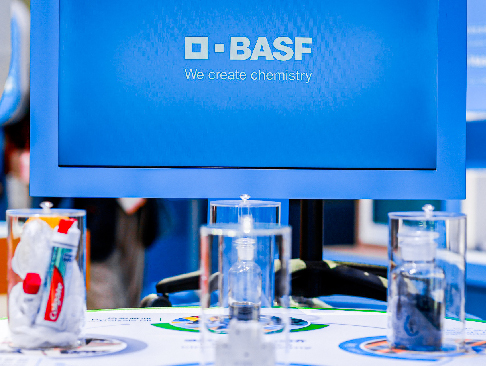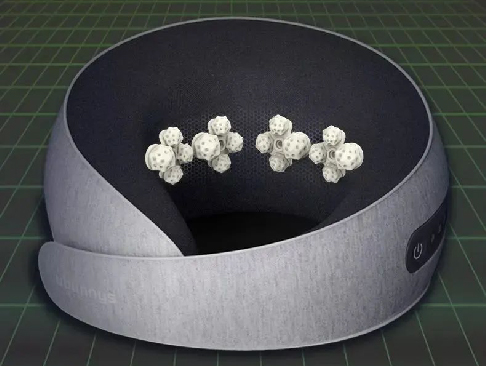

迈凯轮Artura的任务比之前的几款车型更具挑战性:打造一款全系列生产的高性能混合动力超级跑车,在各个方面都出类拔萃,在性能、参与度和效率共享方面均位居前列。工程和设计团队全面应对这一挑战——过程的任何一个部分都不是孤立地进行的——在每个领域都设定了雄心勃勃的目标:重量;性能;司机参与;效率;敏捷性;细化;质量和可用性。当然,3D打印也起到了一定作用。迈凯轮确认在发动机生产过程中使用了3D打印核心,然而,3dpbm怀疑底盘和动力总成的其他部分也直接打印。
The brief for the McLaren Artura was even more challenging than its predecessors: to create a series-production High-Performance Hybrid supercar that excels on every level, with performance, engagement and efficiency sharing equal top-billing. The engineering and design team approached the challenge holistically – no single part of the process was undertaken in isolation – with ambitious targets set in every area: weight; performance; driver engagement; efficiency; agility; refinement; quality and usability. Of course, 3D printing had to play a part. McLaren confirmed the use of 3D printed cores in the engine production process, however, 3dpbm suspects other parts of the chassis and powertrain were directly printed as well.
自从十年前12C彻底改变了超跑领域以来,迈凯轮汽车公司就一直在不断地推动超跑创新的边界。早在2012年,迈凯轮P1就将迈凯轮混合动力车引入了超级跑车领域。Speedtail引入了惊人的混合动力性能新水平,其403公里/小时(250英里/小时)的最大速度使其成为迈凯轮有史以来最快的。
Ever since the 12C revolutionized the supercar segment a decade ago, McLaren Automotive has continued to push the boundaries of supercar innovation. The McLaren P1 brought McLaren hybridization to the hypercar sector as long ago as 2012. The Speedtail introduced astonishing new levels of hybrid performance, its 403km/h (250mph) maximum speed making it the fastest-ever McLaren.
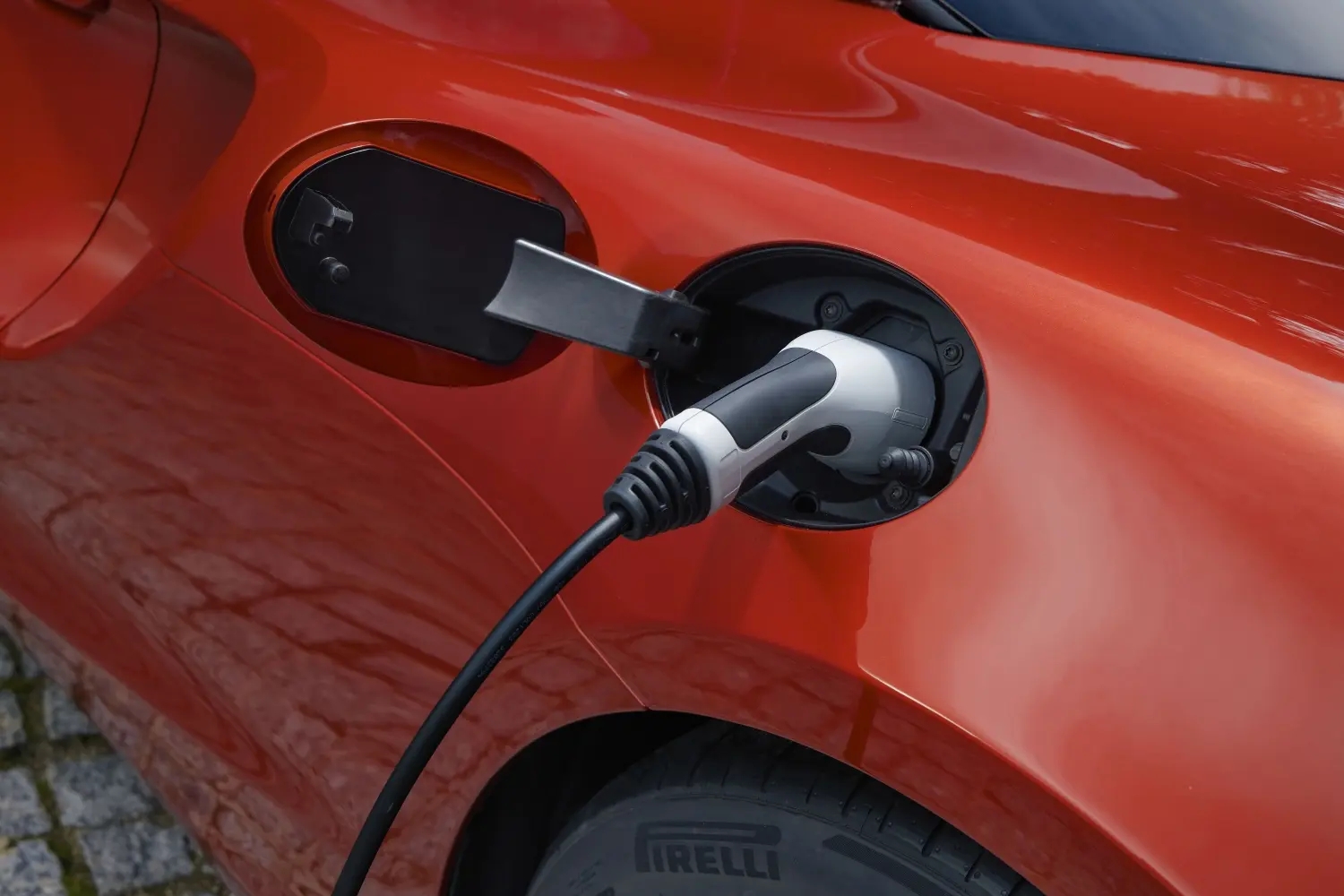
每一个目标都实现了——在大多数情况下,甚至超过了——这预示着Artura作为迈凯轮下一代高性能混合动力车的到来,开启了一个新的超级跑车时代。
Every target was met – and in most cases, surpassed – heralding the arrival of the Artura as a next-generation McLaren High-Performance Hybrid that introduces a new supercar era.
“我们在迈凯轮设计汽车的方式是不同的。我们采用整体的方法,包括技术设计和工作室设计,在汽车行业的领域往往是分开的,有时甚至竞争;迈凯轮认为这些支柱是紧密相连的,并朝着共同的目标努力。”
“The way we design cars at McLaren is different. We use a holistic approach comprising both technical design and studio design, areas that in the automotive industry are often separated and sometimes even compete; McLaren sees these pillars as integrally linked and working towards common goals,” said Dan Parry-Williams, Director of Engineering Design, McLaren Automotive.
V6引擎的3D打印核心
3D printed core in the V6 engine
“我们全新的V6发动机结构紧凑,重量轻,功率大,效率极高。辅助包装尺寸混合系统,使Artura重心较低,而120°的v字形设计允许我们有一个非常短的和硬的曲轴,这意味着引擎可以加速到8500 rpm,交付戏剧和兴奋你期望从迈凯轮跑车,“动力系统负责人理查德•杰克逊表示,迈凯轮汽车。
“Our all-new V6 engine is compact, light, powerful and extremely efficient. The dimensions aided packaging of the hybrid system and enabled a lower center of gravity for the Artura, while the 120° vee design allowed us to have a very short and stiff crankshaft, which means the engine can rev all the way to 8,500rpm, delivering the drama and excitement you expect from a McLaren supercar,” said Richard Jackson, Head of Powertrain, McLaren Automotive.
迈凯轮的工程师们设计这款全新的3.0升V6发动机是为了为更小容量的V6涡轮增压发动机设定新的标准,这款发动机是Artura动力系统的核心。M630的扭矩为5585ps (577bhp)和5585nm (431lb ft),比迈凯轮的任何发动机每升产生的PS都要多,除了Elva和迈凯轮塞纳的4.0升V8引擎。它重量轻——仅160公斤,比迈凯轮的V8轻50公斤——而且非常省油,独特的广角配置和紧凑的尺寸使其能够拥有比迈凯轮的V8引擎和七速变速箱更短的高性能混合动力总成。考虑到麦克拉伦的第8档,以及第一辆电子控制的差速器,这一切都更加令人印象深刻。
Designed by McLaren engineers to set new standards for smaller capacity V6 turbocharged engines, an all-new 3.0-litre V6 is at the heart of the Artura’s powertrain. Generating 585PS (577bhp) and 585Nm (431lb ft) of torque, the M630 produces more PS per liter than any McLaren engine except for the 4.0-litre V8 of the Elva and McLaren Senna. Lightweight – at just 160kg it weighs 50kg less than a McLaren V8 – and extremely fuel-efficient, its unique wide-angle configuration and compact size enable a High-Performance Hybrid powertrain package that is shorter than McLaren’s V8 engine and seven-speed transmission. That’s all the more impressive given the addition of an eighth gear, as well as the inclusion of McLaren’s first electronically controlled differential.
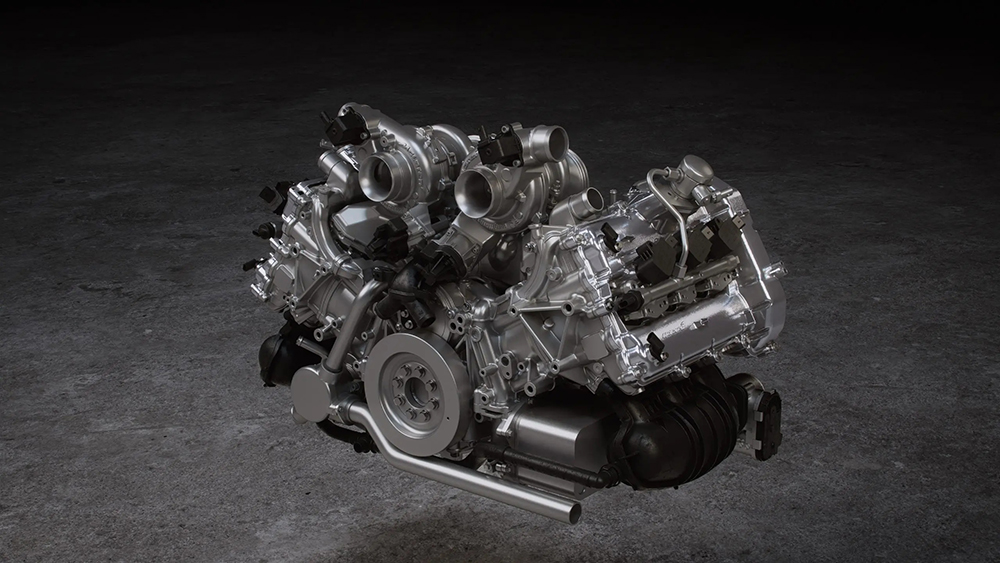
2993 cc的双涡轮增压V6;120°v角,涡轮在“热v形”。开发出了585PS,比迈凯轮V8发动机轻50公斤,短190毫米,输出功率接近每升200PS 这款发动机为2993cc干油底壳V6发动机,纵向安装,后轮驱动,内径84.0mm,冲程90.0mm。气门正时是连续可变的。峰值功率585PS (577bhp)在7,500rpm时产生,红线在8,200rpm (8,500rpm间歇)。5585nm (431lb-ft)的扭矩产生于2250-7000rpm。在350bar压力下运行的汽油直接喷射(GDI),确保了在增加功率和减少排放的同时进行精确的加油,每个气缸都有一个中央喷油器,而汽油微粒过滤器(GPFs)和催化转换器则确保满足所有的法律要求。
2,993cc twin-turbocharged V6; 120° v-angle with turbos in ‘hot vee’. Develops 585PS – a specific output approaching 200PS per litre – and torque of 585Nm Light and compact: 50kg lighter and 190mm shorter than McLaren V8 engine
Mounted longitudinally and driving the rear wheels, the engine is a 2,993cc dry-sump V6 with an 84.0mm bore and 90.0mm stroke. Valve timing is continuously variable. Peak power of 585PS (577bhp) is produced at 7,500rpm, with the redline at 8,200rpm (8,500rpm intermittent). 585Nm (431lb-ft) of torque is generated from 2250-7000rpm. Gasoline direct injection (GDI) operating at 350bar pressure ensures precise fuelling for increased power and reduced emissions, with one central injector per cylinder, while Gasoline Particulate Filters (GPFs) and catalytic converters ensure all legislative requirements are met.
发动机采用120˚的“热v形”布局。这种配置允许共享曲柄销,使非常短和硬曲轴适合于高功率、高转速的发动机。更宽的角度带来了诸多优势,包括较低的重心,以及在v形结构中形成一个容纳双涡轮增压器的空腔。这是导致这款发动机比迈凯轮的双涡轮增压4.0升V8发动机窄220毫米的原因之一,在长度和重量上的额外优势确保了其紧凑的特性。
The engine employs a 120˚ ‘hot vee’ layout. This configuration allows shared crankpins enabling a very short and stiff crankshaft appropriate for high power, high-revving engines. The wider angle brings advantages that include a lower center of gravity and the creation of a cavity within the vee to house the twin turbochargers. This is one of the factors that makes the engine 220mm narrower than McLaren’s twin-turbocharged 4.0-liter V8, its compact nature assured by additional advantages in length and weight.
此外,“热v形”配置优化了性能和排放。这使得短而等长的排气流道为涡轮提供动力,使其能够更快地绕线,而非常紧密耦合的催化剂则以最小的压降直接输送到尾部。
The ‘hot vee’ configuration additionally optimizes performance and emissions. This enables short, equal-length exhaust runners feeding the turbos, allowing faster spooling with very close-coupled catalysts feeding straight to the rear with minimal pressure drops.
不同寻常的是,紧凑的单涡旋涡轮增压器是对称的,消除了通常在双涡轮v型发动机的排气和进气系统中看到的性能折衷。该系统采用滚珠轴承技术,以减少涡轮内部的摩擦,使其更快地旋转。与电子驱动的废气门相结合,可以在不考虑系统压力的情况下立即调整位置,使涡轮延迟和响应时间最小化。这-连同电力从电动马达-给Artura极迅速的反应油门输入。
Unusually, the compact mono-scroll turbochargers are symmetrical, removing the performance compromises usually seen in the exhaust and intake systems of twin-turbo vee engines. The system uses ball-bearing technology to reduce friction within the turbo, allowing it to spin up faster. Combined with electronically actuated wastegates that can instantly adjust position regardless of system pressure, turbo-lag and response time are minimized. This – together with the power from the E-motor – gives the Artura extremely rapid response to throttle inputs.
一系列复杂的防热罩紧紧地包围着“热v形”,以有效地冷却它。高温散热器(HTR)风扇的后面有一个喷嘴,用于在“热v形截面”顶部和热罩下方之间高速吹气,这些喷嘴将发动机包裹起来,防止热量通过汽车后部扩散。这些加热的空气通过动力系统烟囱排出,这是后部甲板网中央隔热罩上的一个开口。
A series of complex heat shields tightly surround the ‘hot vee’ to cool it efficiently. These enclose the engine to stop heat diffusing through the rear of the vehicle, with nozzles fed from the back of the high-temperature radiator (HTR) fans to blow air at high speed between the top of the ‘hot vee’ and the underside of the heat shield. This heated air is funneled out through the powertrain chimney, an opening in the heat shield in the center of the rear deck mesh.
轻量化的发动机机体,气缸盖和活塞都是铝。该区块直接涂覆母孔,而不是单独涂覆衬管。这项技术使得发动机的寿命大大缩短。气缸盖和缸体采用3D打印芯,这种技术在f1赛车中比在公路赛车中更常用,可以实现不受影响的精密冷却,例如,在气缸体之间有一个微型的2mm冷却通道。
The lightweight engine block, cylinder heads and pistons are all aluminum. The block has directly coated parent bores rather than separate coated liners. This technology allows the engine to be significantly shorter. The cylinder head and block utilize 3D printed cores, a technology more typically used in Formula 1 than road cars, allowing uncompromised precision cooling, for example, a micro-compact 2mm cooling passage between the cylinders.
另一项创新——这一次得益于改进和包装——是将链传动安装在发动机的后部。这减少了对机舱的NVH干扰,以及扭转振动。总的来说,新的V6发动机产生的机械噪音非常小,无论是来自发动机本身,还是相关的泵和气门系统的声音。进气噪声也优化了细化。
Another innovation – this time benefitting refinement and packaging – is the location of the chain drive at the rear of the engine. This reduces NVH intrusion into the cabin, as well as torsional vibration. Overall, the new V6 produces very little mechanical noise, either from the engine itself or associated pump and valvetrain sounds. Intake noise has also been optimized for refinement.
在节气门的帮助下,Artura不仅可以每天在正常的城市交通中行驶,还可以在公路或赛道上成为一辆令人难以置信的超级跑车。
The combination of enhanced refinement and instant driver engagement under throttle enables the Artura to fulfill its dual role as a vehicle that can be driven every day in normal urban traffic and an incredibly immersive supercar on road or track.
在改进方面的进步使迈凯轮能够在油门被压低时定制出独特的排气声音。在迈凯轮中,开启和关闭油门的声音是迄今为止最棒的,这反映了人们对这款高性能混合动力系统驱动模式的不同需求。这是通过多种途径实现的,包括减少排气系统本身的长度——排气系统直接从“热v形”出口返回,减轻重量,并允许创建一个全宽度后扩散器。轻量化排气系统有优化的谐振器,以增强阿图拉的和谐和充分排气的注意。
The advances in refinement have allowed McLaren to tailor a unique exhaust sound when the throttle is depressed. The delta between on- and off-throttle sound is the greatest of any McLaren to date, acknowledging the differing demands of the High-Performance Hybrid powertrain’s driving modes. This has been achieved through a number of routes, including the reduction in length of the exhaust system itself – the exhausts exit straight back from the ‘hot vee’, reducing weight and allowing for the creation of a full-width rear diffuser. The lightweight exhaust system has optimized resonators to enhance the Artura’s harmonic and full-bodied exhaust note.
超轻量级工程
Super-lightweight engineering
Artura是迈凯轮第一辆使用MCLA的车型,MCLA是在位于英国谢菲尔德的迈凯轮复合材料技术中心设计和生产的。MCLA针对高性能混合动力车型进行了优化,包括三个要素:碳纤维单座车身、电气结构、底盘和悬挂结构
The Artura is the first McLaren to use MCLA, which is designed and produced at McLaren Composites Technology Centre in Sheffield, UKOptimised for High-Performance Hybrid models, MCLA comprises three elements: carbon fibre monocoque, electrical architecture and chassis and suspension structures
碳纤维单体轿车比迈凯轮之前的单体轿车更安全、更坚固、更轻
Carbon fibre monocoque is safer, stronger and like-for-like lighter than previous McLaren monocoques
“迈凯轮的新型碳轻量化架构(MCLA)是整个迈凯轮固有的超轻量化工程理念的核心。我们开发了这个全新的高性能混合动力超级跑车的我们从几十年的工作中与其他先进复合材料和轻质材料,使用一流的流程和技术提供重量储蓄抵消较重的混合动力系统,确保更大的能源效率和保持优秀的敏捷性和动态性能客户的预期,”杰米•Corstorphine产品策略总监迈凯轮汽车。
“The new McLaren Carbon Lightweight Architecture (MCLA) is quite literally at the core of the super-lightweight engineering philosophy that is inherent throughout the Artura. We developed this all-new, High-Performance Hybrid supercar with all of our learnings from decades of working with advanced composite and other lightweight materials, using world-first processes and techniques to deliver weight savings that offset heavier hybrid powertrains, ensuring greater energy efficiency and maintaining the outstanding agility and dynamic performance our customers expect,” Jamie Corstorphine, Director of Product Strategy, McLaren Automotive.
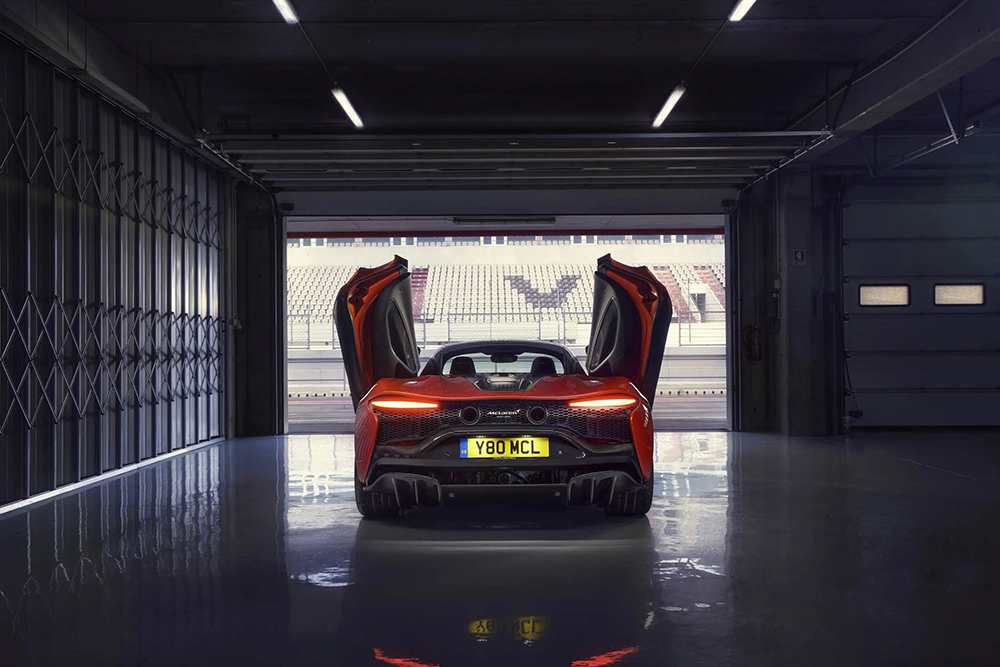
为了实现迈凯轮“阿图拉”计划的具体目标,迈凯轮从全新超级跑车的核心入手,采用了全新的碳纤维架构。这不仅符合该公司在动力和性能方面的超轻工程理念,而且至关重要的是要抵消混合动力系统的额外重量,并根据电池组进行量身定制。
To achieve the very specific aims of the McLaren Artura program McLaren started right at the core of its new supercar, with a completely new carbon fiber architecture. This had to not only be true to the company’s philosophy of super-lightweight engineering for dynamic and performance reasons but also crucially to offset the extra weight of a hybrid powertrain, as well as being tailored to accommodate the battery pack.
新架构被称为迈凯轮碳轻量化架构(MCLA),具有三个特点:全新的碳纤维单体乘员结构、带有铝制防撞梁和后副车架的新底盘,以及首次进入市场的基于域的以太网电气架构。
The new architecture – called McLaren Carbon Lightweight Architecture (MCLA) – features three elements: an all-new carbon-fiber monocoque occupant structure, a new chassis with aluminum crash beams and rear subframe, and a first-to-market domain-based ethernet electrical architecture.
经过四年的制造,MCLA是迈凯轮复合材料技术中心(MCTC)生产的第一个建筑,MCTC是位于谢菲尔德地区的一个新的、最先进的工厂。这种可扩展的平台架构预示着迈凯轮超级跑车新时代的开始。
Four years in the making, MCLA is the first architecture to be manufactured at the McLaren Composites Technology Centre (MCTC), a new, state-of-the-art facility in the Sheffield region. Flexible in application (but physically incredibly stiff and strong) this scalable platform architecture heralds the beginning of a new era of McLaren supercars.
碳纤维单体横造
Carbon fibre monocoque
在新平台的中心是碳纤维单体。近40年前,迈凯轮在一级方程式赛车中率先使用了复合材料技术,并首次将其应用于迈凯轮F1的碳纤维底盘和车身上。当12C在2009年发布时,它推出了独特的一件式模压碳纤维底盘,比同等的全金属结构坚固25%,比同等的铝制底盘轻25%。迈凯轮革命性的技术还使碳纤维单体轿车得以大批量生产,这在以前是无法实现的。
At the center of the new platform is the carbon fiber monocoque. McLaren pioneered composite technology in Formula 1 racing nearly 40 years ago and first transferred it to the road in the carbon fiber chassis and body of the McLaren F1. When the 12C was unveiled in 2009 it introduced a unique one-piece molded carbon fiber chassis that was 25% stiffer than an equivalent all-metal structure and 25% lighter than a comparable aluminum chassis. McLaren’s revolutionary technologies also allowed carbon fiber monocoques to be productionized in volumes never before achievable.
迈凯轮Artura标志着另一个革命性的飞跃。迈凯轮的单体车,无论是为公路还是赛道设计的,从来没有做过这么多:碳纤维结构现在为电池组提供了额外的安全单元,并集成了进一步的碰撞和承重功能。然而,它仍然非常轻,包括电池舱、航空表面、b柱和门铰链配件在内,重量只有82公斤,这使得Artura的整体重量很低,尽管它有130公斤的混合动力部件。
The McLaren Artura marks another revolutionary leap. No McLaren monocoque, whether designed for the road or race track, has ever had to do more: the carbon fiber structure now additionally provides a safety cell for the battery pack and integrates further crash and load-bearing functionality. Yet it remains incredibly lightweight, weighing just 82kg including the battery compartment, aero surfaces, B-pillars and door-hinge fixings, contributing to the low overall weight of the Artura, despite its 130kg of hybrid components.

乍一看,迈凯轮的monocoque可能与迈凯轮的其他碳纤维结构相似,但每个表面的几何形状都是新的,它由四种新的碳材料、一种新的树脂系统和一种新的结构核心材料构成。这些新特性既满足了平台需求,也适应了MCTC目前正在进行的新的定制机械化生产流程。
At first glance, the MCLA monocoque may appear similar to other McLaren carbon fiber structures, but the geometry of every surface is new, and it is constructed from four new carbon materials, a new resin system and a new structural core material. These new properties accommodate both the platform requirements and new, bespoke mechanized production processes now on stream at MCTC.
迈凯轮的内部设计方式确保了迈凯轮能够不断创新单体车型,以适应新技术或新车型,而不会牺牲底盘的质量,以确保其底盘是同级车型中最轻、最硬、最强的。
The in-house approach ensures McLaren can constantly innovate monocoques to accommodate new technologies or new models, without compromising the qualities that ensure its chassis are the lightest, stiffest and strongest in their class.
与之前的迈凯轮单体车相比,迈凯轮单体车在A柱和b柱周围的高度更高,因为它将额外的强度和承重功能整合到碳结构中,取代了金属接合部件。挡风玻璃环绕也是碳纤维的。为了实现所需的电池和油箱安全单元,单体舱壁的两侧延伸至后方,而非传统上被视为后舱壁。这为电池组和油箱提供了侧面冲击保护。
The MCLA monocoque is taller around the A- and B-pillars than previous McLaren monocoques, as it integrates additional strength and load-bearing functionality into the carbon structure, replacing bonded metal parts. The windscreen surround is also carbon fibre. To achieve the requisite battery and fuel-tank safety cell, the sides of the monocoque extend back beyond what would traditionally be seen as the rear bulkhead. This provides side impact protection for the battery pack and also the fuel tank.
有一个严格的公差,monocoque尺寸的+0.75mm横跨结构与最紧的公差之间的机加工特征下降到+/ 0.25mm。这是基本的因素,如悬架几何控制的精度。此外,单体的高扭转刚度确保了悬架本身的灵活性更少的妥协,进一步加强了灵活的乘坐和精确的操作之间的独特平衡。
There is an exacting tolerance to the monocoque dimensions of +0.75mm across the structure with the tightest tolerances between machined features down to +/-0.25mm. This is fundamental to factors such as the accuracy of the suspension geometry control. Additionally, the high torsional rigidity of the monocoque ensures less compromise for the flexibility of the suspension itself, further enhancing the unique balance between a supple ride and precise handling.
该结构对气动热优化也有一定的作用。前轮拱后缘的倒角引导气流出拱并沿着门的底部流动。门的延伸外表皮将空气困在通道内,并将空气驱动到后面的进气口,进入高温散热器(HTRs)的下部。
The structure also plays a role in aerothermal optimization. Chamfered corners at the trailing edge of the front wheelarches guide airflow out of the arches and along the underside of the doors. The extended outer skin of the doors traps the air in this channel and it is driven rearwards into intakes that feed the lower portion of the high-temperature radiators (HTRs).
底盘结构
Chassis structure
碳纤维单体车的两端是铝制副车架,提供了Artura的可变形碰撞结构。这种结构的设计是为了吸收冲击,可以很容易地修复或更换,而且非常经济有效。全铝或全钢底盘的汽车利用其整个结构来吸收和折叠冲击,对整个结构造成更多的损坏,通常包括乘客单元。
Situated at either end of the carbon fibre monocoque are aluminum subframes that provide the Artura’s deformable crash structures. Designed to absorb impacts, the structures can be repaired or replaced easily and very cost-effectively. Cars with a full aluminum or steel chassis use their entire structure to absorb and crumple on impact, causing more damage to the whole structure, often including the passenger cell.
在Artura上,前上叉骨是安装到碳monocoque,而较低的叉骨是连接到铝碰撞副框架。后副车架用螺栓固定在单体车架上,电池下方的碳纤维地板在整车横向连接下横梁,确保所需的扭转刚度,并优化后车架重量。车架下部的长度被缩短,以适应一个定制的后扩散器,新的多连杆叉骨后悬架概念的几何形状是特别激进的。
On the Artura, the front upper wishbone is mounted to the carbon monocoque, while the lower wishbone is attached to the aluminum crash subframe. The rear subframe is bolted to the monocoque, with the carbon fiber floor beneath the battery bridging the lower cross members transversely across the vehicle, ensuring the required torsional stiffness and optimizing the rear frame weight. The length of the lower portion of the frame is shortened to accommodate a bespoke rear diffuser, and the geometry of the new multi-link wishbone rear suspension concept is particularly aggressive.
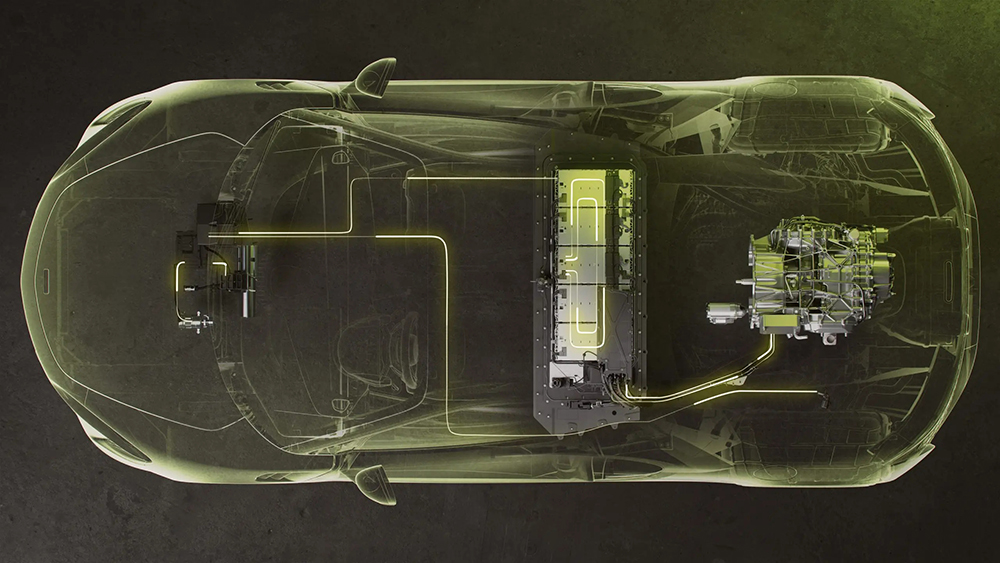

文章来源:3dprintingmedia


2024亚洲设计周「3DPP打印节」北京专场,一场震撼心灵的科技盛宴等你来!
2024-07-26